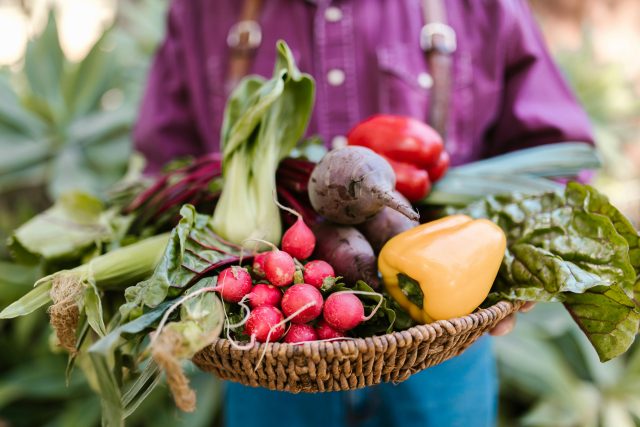Introduction
Regenerative farming in Kenya is transforming the way smallholder farmers approach agriculture. As the effects of climate change and soil degradation intensify, farmers in Kenya are increasingly turning to regenerative techniques that restore the health of the land and improve crop yields and resilience. At Future Community Concern Initiative Kenya, we’re dedicated to helping farmers implement these sustainable farming practices to ensure a brighter, more secure future for Kenyan agriculture.
Understanding Regenerative Farming in Kenya
Regenerative farming is an agricultural approach that focuses on restoring soil health, enhancing biodiversity, and increasing water retention while reducing dependency on chemical inputs. Unlike conventional farming, which often depletes natural resources, regenerative practices seek to regenerate the soil, making it healthier for long-term productivity.
- Soil Health Restoration: Regenerative practices like no-till farming and cover cropping rebuild soil fertility by improving organic matter.
- Increased Water Retention: Techniques such as mulching and agroforestry increase water-holding capacity, which is critical in drought-prone regions.
- Biodiversity Boost: Integrating trees, livestock, and diverse crops improves biodiversity and pest resistance, reducing the need for synthetic pesticides.
Expert Insight:
“Adopting regenerative farming practices not only enhances soil health but also increases long-term farm profitability by reducing reliance on expensive chemical inputs,” says an agricultural expert from the Kenya Agricultural & Livestock Research Organization (KALRO).
Step-by-Step Guide to Implementing Regenerative Farming in Kenya
Adopting regenerative farming involves several key practices that work together to create a more sustainable and resilient agricultural system.
- No-Till Farming:
Avoid plowing the soil to preserve its structure and prevent erosion. Use cover crops instead of tilling to enrich the soil with organic matter.
- Cover Cropping:
Use legumes like cowpeas and green grams to fix nitrogen in the soil and improve its fertility. Sunn hemp and lablab are also excellent for reducing weeds and enriching the soil.
- Agroforestry:
Integrate trees into your farming system to offer shade, improve soil structure, and enhance biodiversity. Trees like Grevillea, Moringa, and Sesbania are ideal for Kenyan farms.
- Composting:
Turn farm waste into nutrient-rich compost to reduce the need for synthetic fertilizers. Composting also helps improve soil structure and water retention.
- Livestock Integration:
Rotational grazing can prevent overgrazing and improve pasture regeneration. Livestock manure can also enhance soil fertility.
Pro Tip:
Attend Future Community Concern Initiative training programs to learn how to properly implement these regenerative farming techniques and access resources to support your farming journey.
Best Practices for Regenerative Farming in Kenya
Following best practices and avoiding common mistakes that can undermine soil health and crop productivity is essential to ensuring success with regenerative farming.
- Best Practice 1: Use Organic Inputs:
Always prioritize the use of organic fertilizers and compost. These inputs improve soil health without the harmful effects of synthetic chemicals.
- Best Practice 2: Implement Crop Rotation:
Rotate your crops annually to avoid depleting the soil of specific nutrients and to break pest cycles.
- Mistake to Avoid 1: Overgrazing:
Livestock should be rotated through different pastures to avoid overgrazing. This ensures that the soil has time to recover and regenerate.
- Mistake to Avoid 2: Ignoring Soil Testing:
Regular soil tests are essential to monitor nutrient levels and make informed decisions about fertilization and soil management.
Practical Example:
A smallholder farmer in Makueni implemented agroforestry, no-till farming, and cover cropping on a portion of his farm. Within the first year, he saw a 30% increase in crop yield. By diversifying crops and integrating trees, he reduced soil erosion and improved water retention.
Conclusion
In Kenya, regenerative farming transforms smallholder farmers by restoring their land, boosting productivity, and enhancing their resilience against climate change. At Future Community Concern Initiative Kenya, we’re here to help guide you on this transformative journey, providing training, resources, and community support to help you adopt regenerative practices that will benefit your farm and the environment.
Contact Future Community Concern Initiative Kenya today to learn how regenerative farming can transform your farm. Join our community of forward-thinking farmers and take the first step toward a more sustainable future. Explore our community projects and sign up for our next training session!




One comment
Podii.net
April 19, 2025 at 11:43 am
Hmm it appears like your site ate my first comment
(it was super long) so I guess I’ll just sum it up what I had written and say, I’m thoroughly enjoying your blog.
I as well am an aspiring blog blogger but I’m still new to the whole thing.
Do you have any points for rookie blog writers? I’d definitely appreciate it.